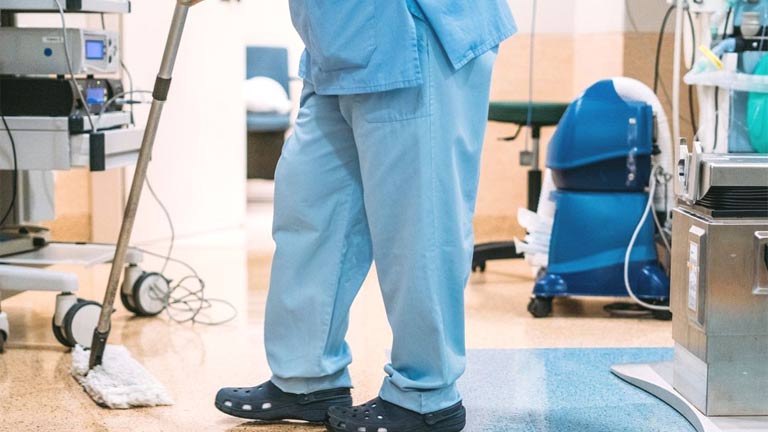
In the bustling realm of medical advancements, there’s an often overlooked, yet critical component: biomedical waste. This crucial aspect has ramifications not just for the immediate environment, but for the broader ecosystem. As we venture deeper into the 21st century, the call for sustainable solutions echoes louder. Enter the next-generation containers designed specifically for sharps waste disposal. But why are these containers vital, and what sets them apart from their predecessors? Let’s delve in.
1. The Current State of Biomedical Waste
Understanding the Challenge:
Biomedical waste is a by-product of healthcare that carries potential risks to both human health and the environment. Sharps, in particular, which include needles, syringes, and scalpel blades, are of significant concern due to the risk of injury and disease transmission. In cities, where medical facilities are abundant, efficient and safe disposal becomes paramount.
Evolution of Disposal Methods:
Over the years, the techniques for sharps waste disposal have undergone significant evolution. From rudimentary incineration to sophisticated autoclaving, the journey has been transformative. However, with each method came its set of challenges, from environmental harm to efficiency issues. As we look towards more sustainable solutions, it’s essential to understand where we’ve been to chart the course ahead.
The Environmental Impact:
One cannot discuss biomedical waste without touching upon its environmental repercussions. Traditional disposal methods have been a significant source of greenhouse gas emissions and toxic by-products. Moreover, careless disposal can lead to soil and water contamination. For cities aiming to become more eco-friendly, evolving the medical waste disposal paradigm is not a choice but a necessity.
2. Innovations in Sharps Waste Disposal
The Rise of Sustainable Containers:
As the world leans towards sustainability, the medical industry isn’t far behind. Embracing eco-friendly designs, next-generation sharps containers are emerging as the answer to many of the challenges we’ve discussed. Made from materials that are both robust and biodegradable, these containers promise a future where safety and sustainability coexist.
Why Next-Gen Containers Matter:
It’s not just about containing the waste. It’s about doing so in a manner that’s efficient, safe, and eco-friendly. The next-generation containers are designed to minimize the risk of accidental pricks, ensuring that healthcare professionals can dispose of sharps with confidence. Furthermore, their sustainable design means a reduced carbon footprint for medical facilities.
Case Study:
Houston is leading the charge in implementing sustainable solutions for sharps waste disposal. With a focus on green initiatives and a commitment to public health, the city has set a benchmark for others to follow.
3. The Future of Biomedical Waste Management
Embracing Technology:
In an age dominated by technology, biomedical waste management is no exception. The incorporation of tech solutions, from AI-powered sorting mechanisms to IoT-enabled tracking systems, promises a future where waste management is more streamlined and effective.
Global Trends and Best Practices:
While might be at the forefront, the global trend is undoubtedly leaning towards sustainable waste management solutions. Countries around the world are sharing best practices, investing in research, and pioneering new methods that promise a safer, greener future.
Benefits Beyond the Environment:
While the environmental benefits are evident, sustainable waste management has broader implications. From economic savings for healthcare facilities to improved public health outcomes, the shift towards sustainability promises rewards beyond just saving the planet.
4. Key Considerations in Container Design
Material Choices and Sustainability:
Selecting the right materials plays a pivotal role in container design. The ideal materials for next-generation containers would be those that are not only durable and puncture-resistant but also biodegradable or recyclable. Research is now veering towards plant-based plastics and other innovative compounds that meet these criteria.
User Experience and Safety:
A container’s design isn’t just about containment; it’s also about the user’s experience. Ergonomic designs that prevent overfilling, clear labeling, and safety mechanisms to ensure secure closure are paramount. The ultimate goal is to minimize the risk of accidental exposure or injury to healthcare professionals and waste handlers.
Adapting to Changing Medical Landscapes:
The medical landscape is ever-evolving, with new procedures, tools, and equipment emerging regularly. Container designs must be adaptable to accommodate these changes. Modular components, adjustable sizes, and compatibility with various disposal methods can ensure that containers remain relevant amidst these shifts.
5. Regulations and Standards
The Role of Government and Regulatory Bodies:
Sustainable waste management isn’t just an industry prerogative; it’s a societal one. Governments, especially in developed countries like the USA, play a pivotal role in setting standards and regulations. These guidelines ensure that waste disposal methods are not only effective but also environmentally friendly and safe.
Case in Point:
Houston stands as a testament to the power of robust regulations. Leveraging strict guidelines, the city has ensured that medical facilities adhere to best practices. Moreover, with medical waste disposal in Houston setting the bar high, other cities can draw inspiration and adopt similar regulatory frameworks.
Keeping Up with International Standards:
As globalization continues, harmonizing standards across borders becomes crucial. International bodies like the World Health Organization (WHO) have set guidelines for biomedical waste management. Embracing these standards ensures that waste management practices are consistent, safe, and sustainable, irrespective of geographical boundaries.
6. Public Awareness and Education
The Need for Informed Stakeholders:
While industry innovations and regulations are crucial, public awareness plays an equally vital role. An informed populace can make better choices, from selecting healthcare providers that prioritize sustainability to disposing of personal medical waste responsibly.
Campaigns and Initiatives:
Many cities have launched public awareness campaigns to educate citizens about the importance of proper sharps disposal. These initiatives, often in collaboration with local healthcare providers and waste management services, have made significant strides in reducing improper disposal and its associated risks.
The Power of Digital Platforms:
In today’s digital age, leveraging online platforms can amplify the reach of awareness campaigns. Websites, social media campaigns, and interactive webinars can engage a broader audience, driving home the message of sustainable and safe biomedical waste disposal.
7. Economic Implications of Sustainable Waste Disposal
Cost Savings in the Long Run:
While the initial investment in sustainable containers and waste management systems may seem hefty, the long-term savings are substantial. Reduced environmental cleanup costs, fewer penalties from regulatory bodies, and savings from efficient waste processing all contribute to a more economical waste management approach.
Potential for Green Jobs:
Sustainability doesn’t just benefit the environment; it also has positive socio-economic implications. The push towards sustainable waste management can lead to the creation of green jobs, from research and development to waste processing and public outreach.
Boosting Medical Tourism:
Cities that prioritize sustainable medical practices, can attract international patients who value eco-friendly healthcare. Medical tourism, combined with a reputation for sustainable practices, can significantly boost a city’s healthcare economy.
8. Challenges and the Path Ahead
Overcoming Initial Resistance:
Change, especially in established sectors like healthcare, often faces resistance. Whether it’s skepticism about new technologies or concerns about costs, the transition to sustainable waste disposal won’t be without its challenges. However, with robust data and successful case studies, these barriers can be overcome.
Continuous Research and Development:
The journey towards complete sustainability is ongoing. As medical practices evolve, so will the waste they produce. Continuous R&D will be essential to ensure that waste management solutions remain effective, safe, and environmentally friendly.
Collaborative Efforts for a Greener Future:
The quest for sustainable biomedical waste disposal isn’t just the responsibility of the medical sector. It requires a collaborative effort, involving governments, businesses, communities, and individuals. Together, a greener, safer future is within reach.
Conclusion:
The emphasis on sustainability in sharps waste disposal is more than just an environmental initiative; it’s a testament to the evolving consciousness of the medical community and society at large. Cities are pioneering this shift, showcasing how innovation, regulation, and public participation can transform waste management. As we look ahead, the journey is filled with promise. With continued efforts, collaboration, and a commitment to a sustainable future, the medical industry can lead the way, setting a benchmark for other sectors to emulate.




